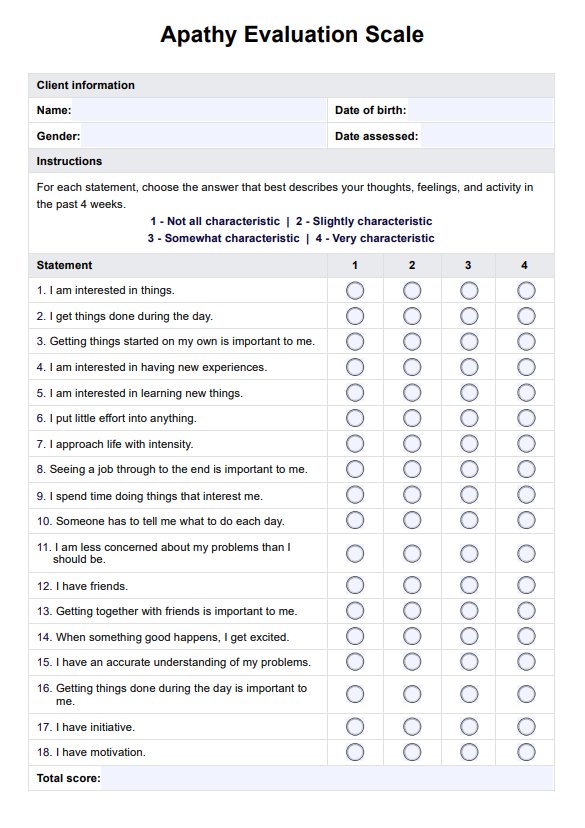Healthcare professionals typically use tools like the Apathy Quiz, Apathy Test or validated scales like the Apathy Evaluation Scale to test for apathy. They usually involve answering a series of questions that assess interest, enthusiasm for interest, and emotional and cognitive engagement. The results help identify the level of apathy and guide further evaluation.

Apathy Test
Use the Apathy Test to assess feelings of indifference and a lack of interest among clients.
Apathy Test Template
Commonly asked questions
A person may notice that they have apathy if they experience a consistent lack of interest, enthusiasm, or concern for the things, events, activities, or people they once cared about. If these feelings persist, they should consider consulting with a doctor or mental health professional for assessment is important.
Apathy is not uncommon and can occur in various contexts, especially in relation to mental health conditions like depression, neurological disorders, or a disease or dementia. It is often underreported, as people may not recognize or acknowledge their symptoms.
EHR and practice management software
Get started for free
*No credit card required
Free
$0/usd
Unlimited clients
Telehealth
1GB of storage
Client portal text
Automated billing and online payments











